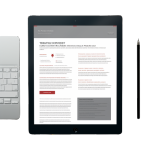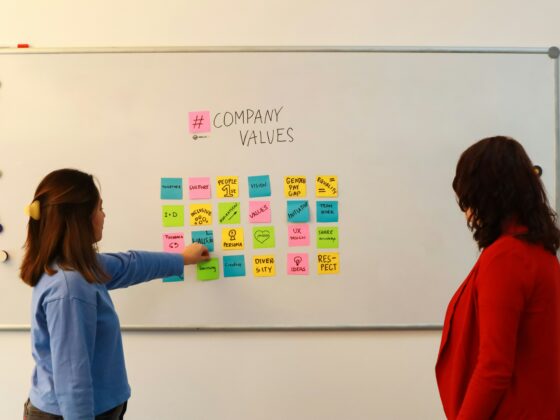
In the hospitality world, guest feedback has long been a valuable barometer of performance. But for much of its history, it was more of a rear-view mirror than a steering wheel — a lagging indicator that told operators how they had done, rather than guiding them on what to do next. That’s changing fast.
Today’s guest feedback tools are no longer just survey engines; they are sophisticated, integrated intelligence platforms. They capture signals from across the guest journey, apply advanced analytics, and feed insights directly into operational playbooks. For hotel IT executives and marketing leaders, this transformation is less about collecting more comments and scores — and more about empowering teams to act in the moment.
From Surveys to Omnichannel, Real-Time Intelligence
Five years ago, the typical hotel feedback program revolved around emailed post-stay surveys and occasional online review monitoring. “Operators primarily relied on solicited feedback collected through traditional methods,” recalls Geoff Ryskamp, vice president and executive advisor at Medallia. “Today, advanced platforms can capture feedback across a multitude of channels, including unsolicited feedback from social media, online reviews, customer service interactions, and observed digital behavior.”
Amanda English, senior manager of programs at Preferred Hotels & Resorts, says the trend is clear across the independent luxury properties her team supports. “We’ve observed a growing emphasis on the value of real-time data throughout the guest journey,” she explains. “This approach goes beyond collecting feedback solely after checkout—it includes gathering insights during the pre-arrival phase and while guests are on property. This ensures that guest satisfaction is monitored and addressed throughout the entire stay.”
In the luxury segment, English adds, there’s also a shift toward making the process seamless and intuitive, “creating a user-friendly and natural experience for guests, encouraging engagement without disrupting their stay.”
Ryan King, senior vice president of Shiji Americas, points to another major advancement: unified feedback platforms. “Previously, it wasn’t possible to respond to reviews across all major channels,” he says. “Now, as platforms like Booking.com, Google, and Expedia have developed APIs for providers like us, hoteliers can respond through one solution. This has significantly improved the efficiency of how hotels manage the daily volume of reviews.”
That omnichannel reach — paired with more intuitive interfaces — not only gives a fuller picture of guest sentiment but also allows operators to spot and resolve issues mid-stay, before they can sour the experience.
For Sara Kear, chief marketing officer at Condado Tacos, the shift has been just as much about mindset as it has about tools. “We’ve shifted from reacting to feedback to really using it to guide what we do,” she says. “We can now connect real-time guest behavior, sentiment, and purchase data… so we’re not guessing what people care about. We know. This helps us spot what’s working and what’s not and we can adjust quickly, both at the brand level and in individual restaurants.”
Christopher Hatt, director of learning & development at Miguel’s Jr., says his team made a similar realization — that relying solely on public reviews didn’t give them the operational insight they needed. “We recognized that relying only on public reviews wasn’t offering enough data to make any actionable decisions about operations,” he explains. The brand adopted a direct feedback model, designed to gather richer guest input without overburdening operators or guests, and now has the volume and quality of data needed to better align day-to-day operations with guest expectations.
Devana Bhargava, Group Product Manager, Yelp for Restaurants also offers a word of caution:
“Many operators focus primarily on public reviews or social media posts, overlooking in-the-moment feedback directly that can reveal operational blind spots. For example, comments about waitlist communication, seating preferences, or server attentiveness often go untracked. Missing these signals means missing opportunities to fine-tune the customer journey, improve staff training, and personalize the experience—ultimately impacting guest experience and repeat visits.”
AI Takes Center Stage
The explosion in unstructured guest feedback — free-text survey responses, online reviews, social media posts — has created a need for tools that can analyze at scale. Natural language processing, sentiment analysis, and now generative AI are helping hospitality brands make sense of it all.
For example, AI is enabling “syntax listening” to identify recurring issues, automated suggestion engines to guide improvements, and even draft brand-voice-consistent responses to reviews, King explains.
The benefits aren’t limited to guest communication. Manisha Powar, head of product for Qualtrics XM for Customer Experience, notes that AI can “instantly summarize data and pull forward suggested actions,” giving managers an at-a-glance view of top metrics and trends so they can act quickly.
Some providers are taking it a step further. Alex Beltrani, founder and CEO at Tattle, explains that feedback tools used to gather a lot of data but “left it up to the operator to figure out what to do with it.” Now, AI is actively coaching teams based on the data. Rather than overwhelming managers with dashboards, advanced tools can analyze feedback at scale, identify operational patterns, and translate them into actionable guidance tied to brand standards. “Operators don’t just get a guest sentiment score—they get a playbook for improvement, customized to each business’ real-world conditions,” he adds.
Closing the Loop Faster
If there’s one expectation guests have today, it’s speed. They don’t want to wait days for an acknowledgment or weeks to see a change. Beltrani emphasizes that closing the loop quickly means not just responding but “demonstrating improvement on their next visit.”
For some brands, this involves real-time alerts to frontline teams when negative feedback comes in. Joe Yetter, GM of PAR Technology’s Engagement Cloud, also stresses the value of immediacy: “When surveys are automatic, pre-populated with transaction data and delivered while the experience is still fresh, guests are far more likely to engage” — and more likely to be won back with quick resolution.
Guests “want to share their thoughts in the moment and know their input matters,” Bhargava adds. That means short, mobile-friendly surveys and rapid acknowledgment, not lengthy forms that feel like work.
Powar adds that real-time or in-the-moment feedback is critical for preventing small issues from becoming loyalty-breakers. She points to Hilton as an example. While the company had long used post-stay surveys to enhance offerings, it recognized that these lagging indicators were no longer sufficient. Hilton now incorporates feedback from multiple channels — including SMS, social media, email, and contact center calls — into a continuous listening program that spans the booking stage through arrival and stay.
For Kear, real-time feedback also plays a role in ensuring operational improvements stick. “The most helpful feedback is the kind that’s specific and consistent, such as order accuracy, food quality, speed, and the overall guest experience,” she says. Condado Tacos gathers these insights through social listening, loyalty data, and reviews, then uses them to coach teams and refine marketing.
Meanwhile, at Miguel’s Jr., feedback is used to spotlight performance in areas like hospitality and order accuracy, giving restaurant leaders a clear view of how guests perceive these fundamentals and helping them respond with targeted improvements, Hatt explains.
English says the most valuable insights are those that can be acted on immediately to improve both service quality and operational efficiency. As part of Preferred Hotels & Resorts’ Quality Assurance program, she recommends that properties:
- Share guest feedback with associates to foster transparency and engagement.
- Implement targeted training to address specific service opportunities.
- Initiate timely service recovery to reinforce the brand’s commitment to excellence.
She also stresses that positive feedback should be celebrated as team recognition, while recurring themes signal opportunities for broader operational enhancements.
King adds that many hotels still underuse in-stay surveys, which can be a powerful tool for service recovery. “A simple mid-stay check-in — or a follow-up after resolving a guest issue — can make a big difference,” he says. “Collecting that sentiment before checkout helps ensure guests leave on a positive note and are more likely to share that feedback with others.”
Overlooked Signals and Missed Opportunities
Despite the technological advances, operators still miss valuable guest signals. One common blind spot is emotional sentiment — the “why” behind a guest’s loyalty or dissatisfaction. Yetter warns that non-response feedback, or silence, can be more dangerous than overt complaints: it often signals indifference, which is much harder to overcome.
Other overlooked signals come from within the organization. Powar highlights employee feedback as a key but underused data source: “Exceptional customer experiences begin with happy and engaged employees.” At KFC, Qualtrics gathers employee insights on how new menu items or technology impact service, enabling operational tweaks that directly boost customer satisfaction.
Ryskamp also urges operators to pay attention to unsolicited feedback and digital behavior signals — like where guests struggle in a booking flow — to uncover friction points that won’t show up in a post-stay survey.
The Bridge from Insight to Action
Collecting feedback is easy; turning it into operational change is hard. The number one barrier? Disconnected systems. “When feedback exists in isolation from the systems teams use daily, insights rarely translate to action,” Yetter says.
Leading brands are solving this by tightly integrating feedback tools with POS systems, loyalty programs, and operational dashboards, Yetter adds. That integration allows feedback to be tied to specific guest profiles, stays, or transactions, giving much-needed context to prioritize improvements.
The payoff can be dramatic. Powar points to KFC’s omnichannel experience program, which integrates structured and unstructured feedback with AI and predictive analytics. This has led to measurable improvements in order accuracy, speed of service, and digital ordering — even propelling KFC France to the top spot for Google reviews among QSRs in the region.
Kear agrees that the link between guest feedback and operational tools is critical: “At the end of the day, our goal is simple. We want every team to have the tools to create a consistently great guest experience. That’s how you build loyalty. Not just one good visit, but trust over time.”
Accountability and Cultural Change
Technology can deliver insights, but people must act on them. King advises tying KPIs directly to guest feedback and holding general managers accountable for key service metrics. This not only keeps focus on what matters to guests but also creates a culture where feedback drives daily decisions.
King also warns that when marketing and operations teams aren’t aligned, valuable insights from feedback analysis can be lost. He says leading brands address this by ensuring cross-department visibility into guest sentiment data, using it to guide Capex priorities, shape training programs, and refine communication strategies.
Similarly, Ryskamp stresses the need for cross-functional collaboration and “closed-loop processes” where feedback leads to visible action and follow-up. Showing guests that their input changes things is not just good service — it’s a competitive differentiator.
The Road Ahead: Conversational, Predictive, Proactive
The next phase of guest feedback will likely be even more dynamic and personalized. AI-powered “conversational feedback” is already being used by more than 50 brands in the Qualtrics ecosystem, adapting survey questions in real time based on a guest’s responses, Powar notes. This approach doubles feedback capture rates and keeps guests engaged long enough to gather actionable detail.
As these systems mature, they will move from describing the guest experience to predicting and shaping it. With integrated operational and financial data, hotels will be able to forecast the ROI of a service change before making it. And with predictive analytics, operators will know where to deploy resources to prevent issues before they arise, Powar adds.
A Strategic Imperative
For hotel IT executives, the message is clear: the value of guest feedback platforms is no longer in the collection, but in the connection — linking guest sentiment directly to operational levers and measurable business outcomes. This requires tight integrations, robust analytics, and real-time accessibility for decision-makers at every level.
For marketing leaders, the opportunity lies in using feedback to inform not just service recovery but brand storytelling. Demonstrating that you listen and act builds trust, differentiates your brand, and turns satisfied guests into advocates.
The transformation of guest feedback tools from passive surveys to active operational engines is reshaping the competitive landscape in hospitality. Those who treat feedback as a living, breathing operational input — rather than a static report — will be the ones steering their organizations toward sustained guest loyalty and profitability.








